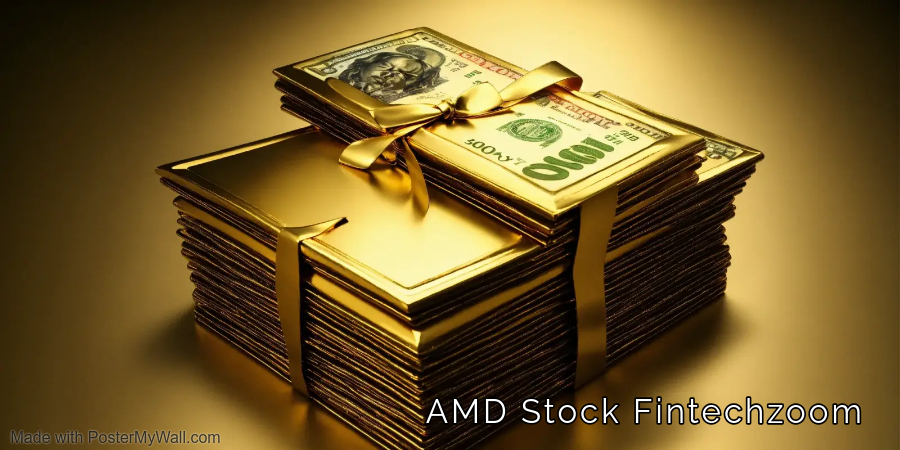The 1943 Penny Value: A Comprehensive Guide
The 1943 penny value of the most intriguing and iconic coins in American numismatic history. Known for its unique composition and historical significance, the 1943 penny has captured the attention of collectors and coin enthusiasts for decades. Its value, rarity,1943 penny value and the stories surrounding it make it an essential piece for those interested in U.S. currency. In this article, we will explore the background, variations, and the current value of the 1943 penny, along with tips on how to identify authentic versions and what factors influence their worth.
1. The Historical Context of the 1943 Penny
The 1943 penny is unique for its composition 1943 penny value. Unlike traditional pennies, which were made primarily of copper, the 1943 penny was made from steel. This change was a direct result of World War II, during which copper was needed for the war effort, particularly for ammunition and other military equipment.
The War Effort and Material Shortages
During the early 1940s, the United States found itself in the thick of World War II. Copper, a critical material for making electrical wiring and ammunition, became scarce as it was redirected to military production. In an effort to conserve copper for the war effort, the U.S. Mint was tasked with finding an alternative material for pennies. This is how the idea for steel pennies, coated with zinc to prevent rust, was born.

The change in composition was temporary, but the 1943 penny became a collector’s item due to its unique place in history. It was only produced for one year, 1943 penny value which made it a special coin. However, the decision to produce steel pennies came with its own set of challenges, including issues with wear and confusion with dimes due to the coin’s silver-like appearance.
The Public Reaction
When the 1943 penny was released, the public was 1943 penny value quick to notice the difference. The steel penny, with its silver-gray appearance, was often mistaken for a dime, leading to confusion among consumers. While the government tried to explain the change as a necessary wartime measure, many people were not pleased with the new design. The steel pennies also tarnished easily, and many became corroded after circulating for a short period. Despite these drawbacks, the coins served their purpose, and their unique place in history was cemented.
The Transition Back to Copper
After 1943, the U.S. Mint returned to using copper1943 penny value for pennies. The decision was driven by several factors, including the end of the war and the negative feedback from the public about the steel pennies. The switch back to copper was welcomed, but by that time, the 1943 steel pennies had already left their mark on American history.
2. The Different Variations of the 1943 Penny
While the 1943 penny is known primarily for its steel composition, there are several variations of the coin that collectors should be aware of. These variations can have a significant impact on the coin’s value and rarity.
The Standard 1943 Steel Penny
The vast majority of 1943 pennies were struck in steel 1943 penny value and coated with zinc. These coins were produced at three U.S. Mint locations: Philadelphia, Denver, and San Francisco. Each mint used its own mintmark, which can be found below the date on the coin. The mintmarks are as follows:
These standard steel pennies are the most common1943 penny value , but their condition and the mintmark can influence their value. 1943 penny value While they are not particularly rare, finding one in excellent condition can still fetch a decent price.
The 1943 Copper Penny: A Rare Error Coin
Perhaps the most famous variation of the 1943 penny is the copper version. Despite the switch to steel, a small number of pennies were mistakenly struck on leftover copper blanks. These pennies are incredibly rare, with only about 20 known to exist. The 1943 copper penny is considered one of the most valuable error coins in American numismatics.
The rarity of the copper 1943 penny has led to numerous fakes and counterfeits over the years, so it’s essential for collectors to be cautious when purchasing one. Authentic 1943 copper pennies can sell for hundreds of thousands of dollars, depending on their condition.
The 1943-D and 1943-S Copper Pennies
In addition to the standard copper 1943 penny, there are also copper pennies from the Denver and San Francisco mints. These coins are even rarer than 1943 penny value the copper pennies from Philadelphia. As of today, only a handful of 1943-D and 1943-S copper pennies are known to exist, making them some of the most sought-after coins in U.S. history. Their value can reach into the millions, depending on the grade of the coin and its provenance.
3. How to Identify Authentic 1943 Pennies
Given the rarity and value of the 1943 copper pennies, there has been a surge in counterfeit coins over the years. For collectors, it’s crucial to be able to 1943 penny value identify whether a 1943 penny is authentic, especially when dealing with high-value error coins like the copper version.
Weight and Composition Testing
One of the simplest ways to identify a fake 1943 copper penny is by testing its weight. A genuine copper penny from that year should weigh approximately 3.11 grams. On the other hand, steel pennies weigh about 2.7 grams. If a coin weighs more or less than these 1943 penny value standard weights, it’s likely a counterfeit or a coin that has been tampered with.
There are also tests to determine the coin’s composition. A magnet is one of the easiest tools to use for this purpose. Steel pennies are magnetic due to their iron content, while copper pennies are not. If a 1943 penny is attracted to a magnet, it’s almost certainly a steel penny, and not the valuable copper version.
Visual Examination
In addition to weight and composition tests, a thorough visual examination is necessary. Authentic 1943 copper pennies have specific characteristics, including sharp and 1943 penny value well-defined lettering and date. Wear and tear can affect the look of a coin, but an experienced numismatist should be able to tell if the coin has been altered or is a fake.
Another red flag to look for is coins that have been plated with copper or manipulated in some way to appear as if they are the rare 1943 copper penny. These forgeries are relatively easy to spot if you know what to look for, but they can still fool inexperienced collectors.
4. Factors That Affect the Value of the 1943 Penny
When determining the value of a 1943 penny, several factors 1943 penny value come into play. From the coin’s condition to its rarity, understanding these factors can help collectors gauge what their 1943 penny might be worth.
Condition and Grade
As with all coins, the condition of a 1943 penny is one of the most important factors in determining its value. Coins that have been well-preserved over the years will naturally fetch a higher price than those that show significant wear. Numismatists use a grading scale to assess a coin’s condition, ranging from Poor (P-1) to Mint State (MS-70). A 1943 steel penny in Mint 1943 penny value State condition can be worth significantly more than one that has been circulated and shows signs of wear.
Even slight differences in grade can have a significant impact on a coin’s value. For instance, a steel penny graded MS-65 (Mint State 65) might sell for several dollars, while one graded MS-67 could sell for hundreds.
Mintmark and Rarity
As mentioned earlier, the mintmark on a 1943 penny can also affect its value. Coins from the San Francisco and Denver mints are generally considered more valuable than those from Philadelphia, simply because fewer were produced. Additionally, error coins like the 1943 copper penny are exceedingly rare and can command sky-high prices due to their scarcity.
The 1943-D and 1943-S copper pennies are even rarer than their Philadelphia counterparts, and this increased rarity is reflected in their value. These coins are among1943 penny value the most coveted by collectors and can sell for well over a million dollars.
Historical Significance
Another factor influencing the value of the 1943 penny is its historical 1943 penny value significance. Because these coins were produced during World War II and represent a unique time in American history, they hold special meaning for collectors. Coins that come with a compelling story or a strong historical connection tend to be more valuable, especially when combined with other factors like rarity and condition.
5. How Much Is a 1943 Penny Worth Today?
Now that we’ve discussed the factors that affect a 1943 penny’s value, you might be wondering how much these coins are actually worth today. The value of a 1943 penny 1943 penny value can range from a few cents to several million dollars, depending on its condition, rarity, and composition.
Standard 1943 Steel Pennies
Most 1943 steel pennies are not particularly rare, and their value largely depends on their condition. A circulated steel penny might only be worth a few cents to a dollar or two, while an uncirculated one in excellent condition could sell for $10 or more. For coins graded MS-65 or higher, prices can go up significantly, with some fetching $50 to $100 or more.
1943 Copper Pennies
The value of a 1943 copper penny is an entirely different story. Because these coins are so rare, they can sell for staggering amounts. In recent years, auctions for 1943 copper pennies have seen prices as high as $1.7 million. Even lower-grade examples of this coin can sell for tens of thousands of dollars. The exact value depends on the condition and whether the coin comes from the Philadelphia, Denver, or San Francisco mint.
1943-D and 1943-S Copper Pennies
If you happen to come across a 1943-D or 1943-S copper penny, you might be in possession of one of the most valuable coins in U.S. history. These coins are so rare that even experts have only identified a handful of genuine examples. Their value can easily surpass $1 million, with some selling for as much as $2 million or more.
6. How to Sell a 1943 Penny
If you believe you have a valuable 1943 penny, the next step is figuring out how to sell it. There are several ways to sell rare coins, but it’s essential to approach the process carefully to ensure you get the best price.
Get Your Coin Professionally Graded
The first step in selling a 1943 penny is to have it professionally graded by a reputable grading service like the Professional Coin Grading Service (PCGS) or the Numismatic Guaranty Corporation (NGC). These organizations will assess the condition of your coin and provide it with an official grade, which can significantly influence its value. Having a coin graded by a third-party service also helps verify its authenticity, which is particularly important for high-value coins like the 1943 copper penny.
Auction Houses and Coin Dealers
Once your coin is graded, you can sell it through an auction house or a professional coin dealer. Auction houses like Heritage Auctions specialize in rare coins and have 1943 penny value access to collectors who are willing to pay top dollar for items like the 1943 copper penny. Selling through an auction house ensures that your coin will reach a broad audience of potential buyers.








Post Comment